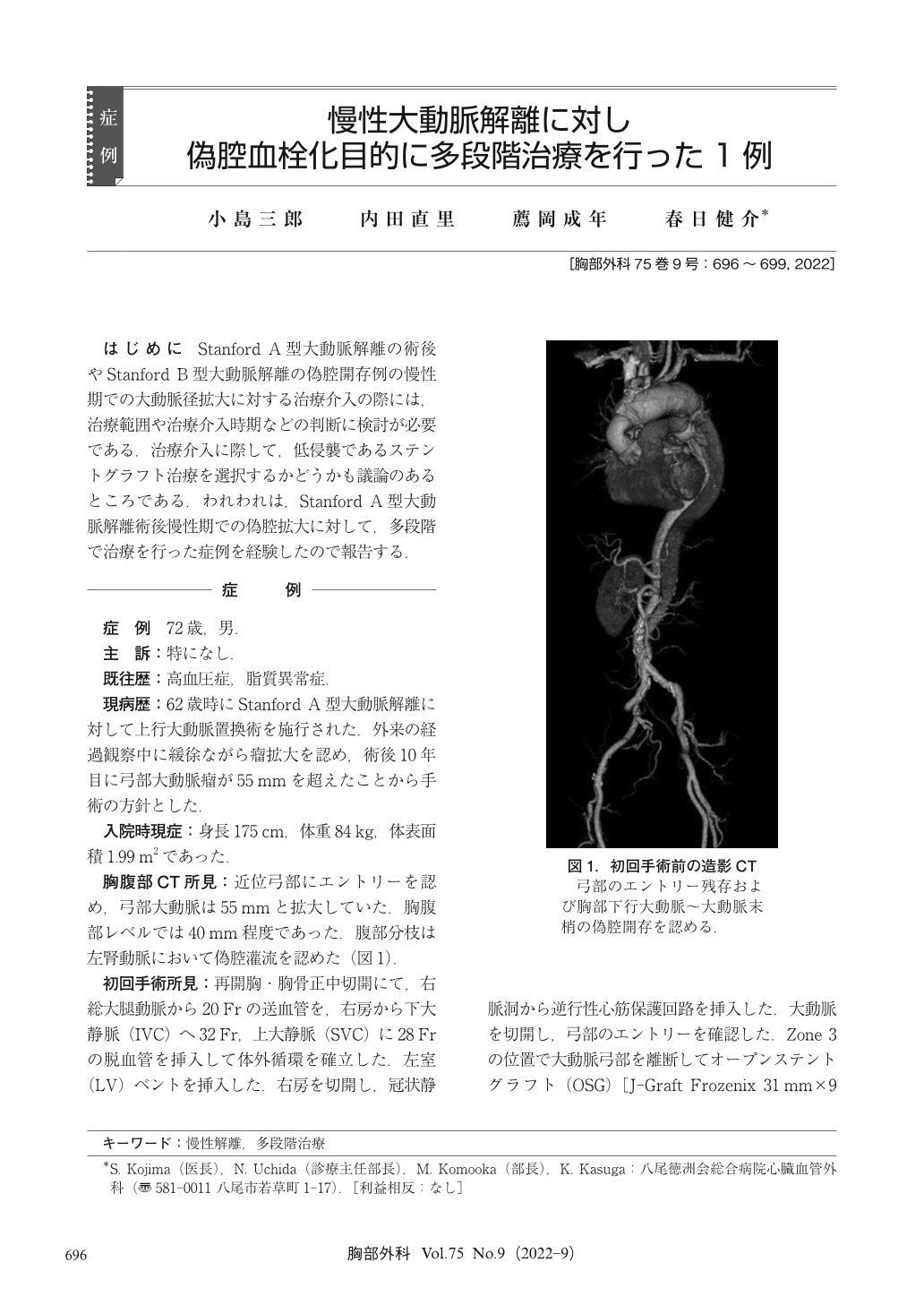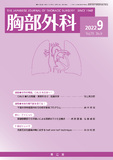Japanese
English
- 有料閲覧
- Abstract 文献概要
- 1ページ目 Look Inside
- 参考文献 Reference
はじめに Stanford A型大動脈解離の術後やStanford B型大動脈解離の偽腔開存例の慢性期での大動脈径拡大に対する治療介入の際には,治療範囲や治療介入時期などの判断に検討が必要である.治療介入に際して,低侵襲であるステントグラフト治療を選択するかどうかも議論のあるところである.われわれは,Stanford A型大動脈解離術後慢性期での偽腔拡大に対して,多段階で治療を行った症例を経験したので報告する.
A 72 years old man underwent hemiarch replacement for acute aortic dissection of Stanford type A at the age of 62 years. Entry remained at the aortic arch, and the false lumen was patent to the terminal aorta. After 10 years, his aortic aneurysm was enlarged to 55 mm. Redo total arch replacement and open stent graft was performed. False lumen of thoracic descending aorta was thrombosed, but thoracoabdominal segment was patent. Two years later, he developed distal stent graft induced neo entry (dSINE). To achieve aortic reconstruction, thoracic endovascular aortic repair (TEVAR) of combined covered stent graft and metal bare stent was performed to the terminal aorta. Three months later, covered stent graft to left renal artery and coil emboli to false lumen, and abdominal endovascular aortic repair (EVAR) was performed. After these procedures, the false lumen was almost thrombosed.

© Nankodo Co., Ltd., 2022


